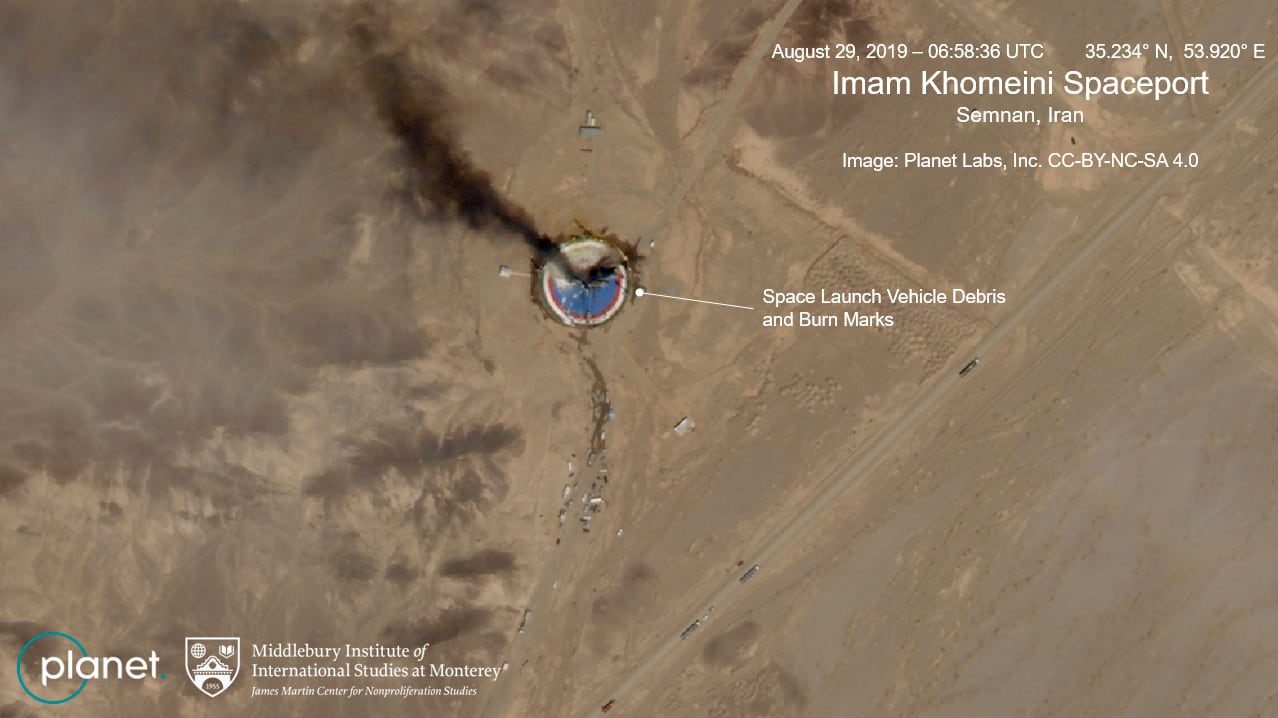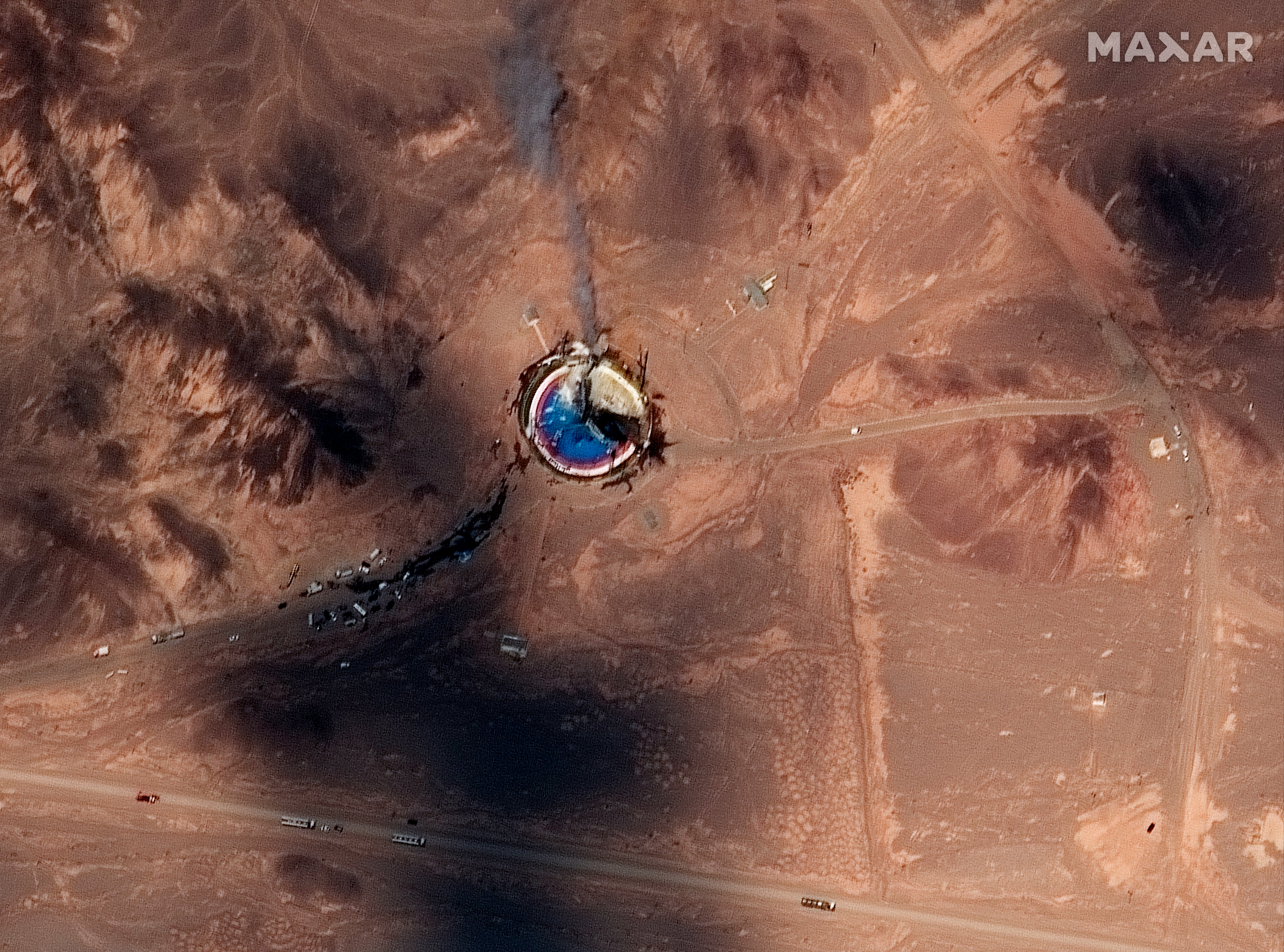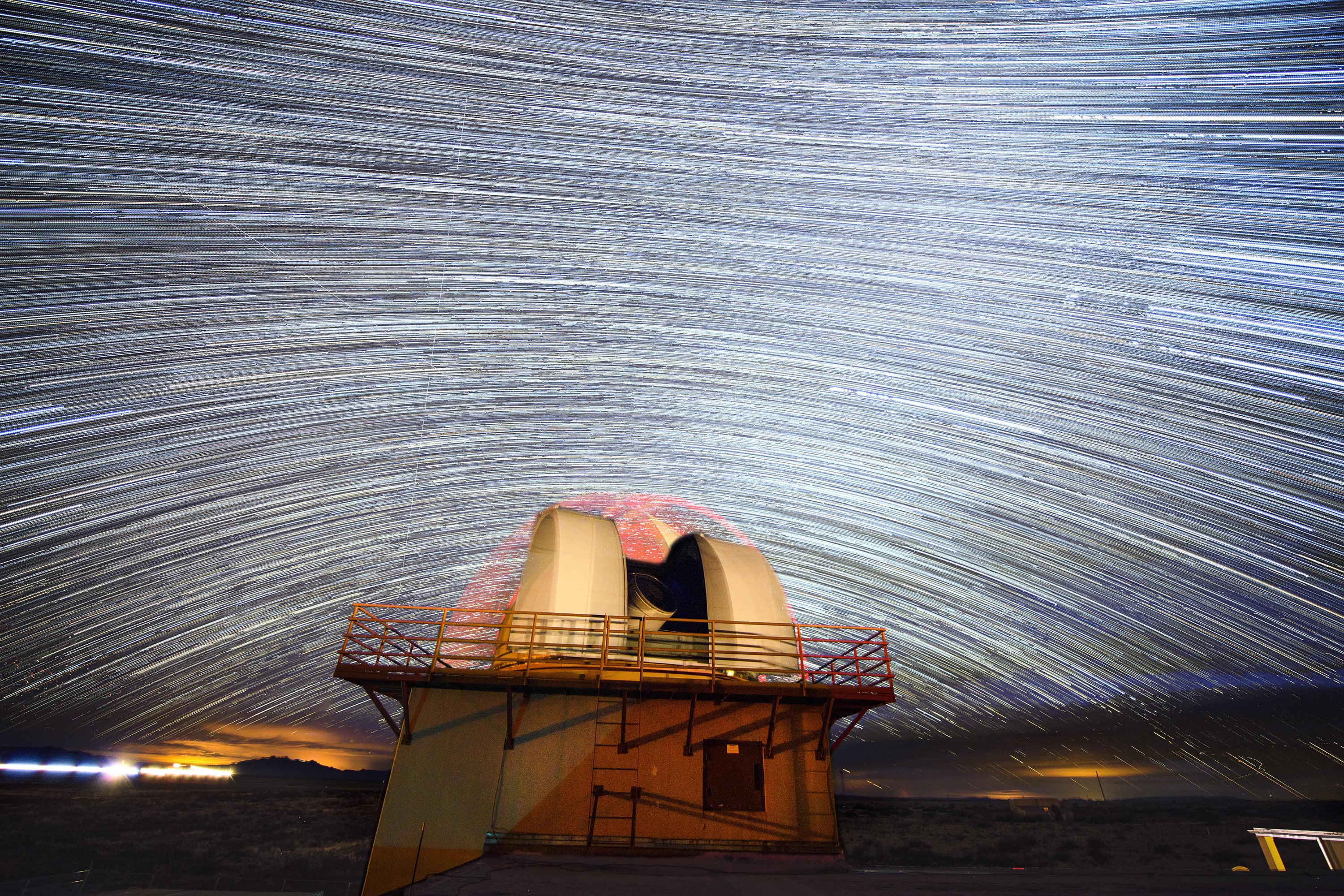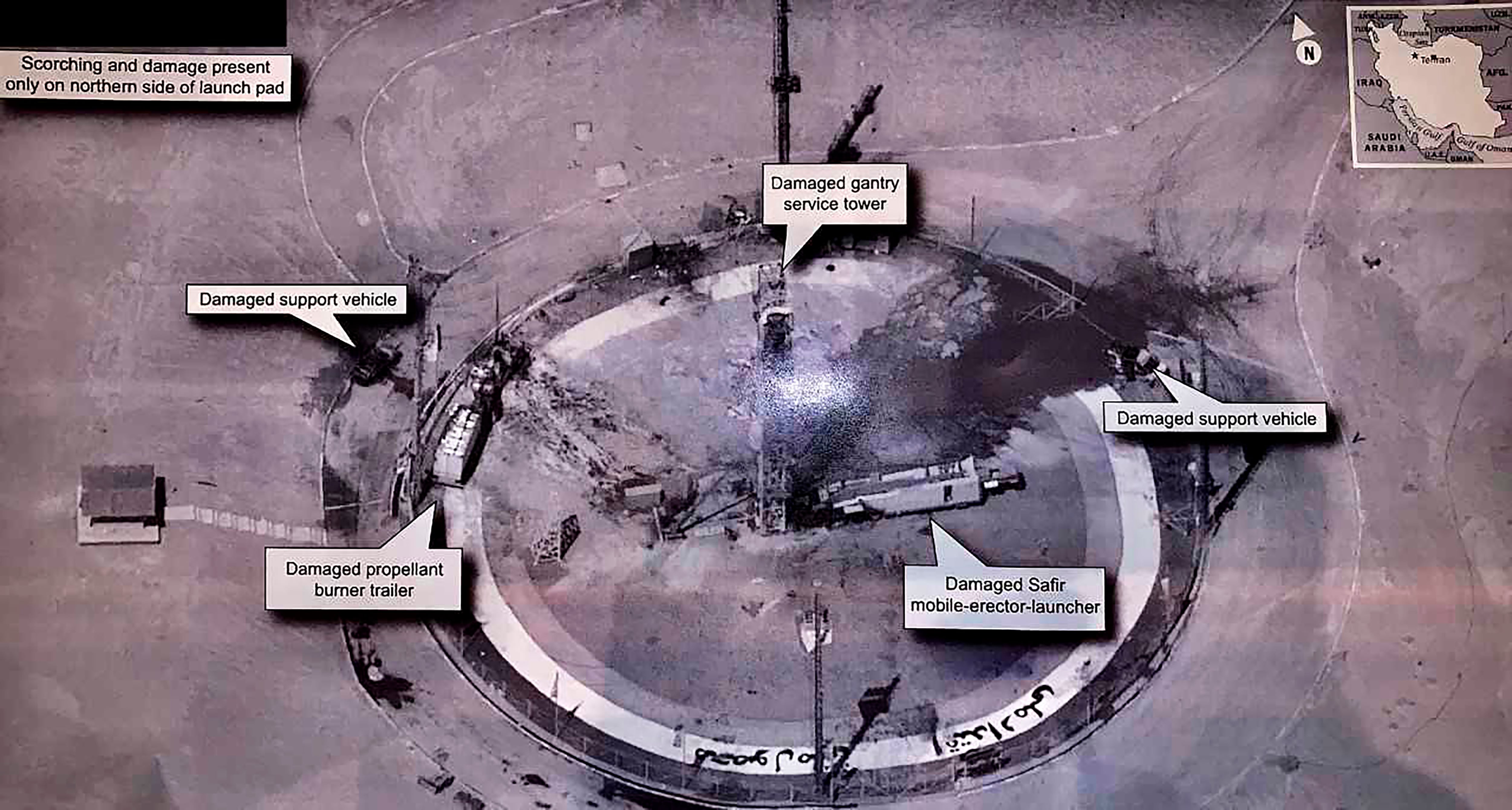DUBAI, United Arab Emirates — The unexplained explosion of a rocket at an Iranian space center grew more mysterious Saturday as President Donald Trump tweeted what appeared to be an American surveillance photo of the site and Tehran showed off a satellite meant to be launched.
Trump's tweet showing the aftermath of Thursday's explosion at the Imam Khomeini Space Center drew a taunting tweet from Iran's Information and Communications Technology Minister Mohammad Javad Azari Jahromi. However, Jahromi declined to say what went wrong while showing local journalists the Nahid-1 satellite meant to be launched.
“I have no idea about the Americans’ comment about Semnan space site,” the minister said. “But what could be seen today is that the Nahid satellite is here and has not yet been handed over.”
Thursday’s explosion marked the third failure involving a launch at the center, which has raised suspicions of sabotage in Iran’s space program. The U.S. has criticized the initiative as a way for Tehran to advance its ballistic missiles.
Trump directly acknowledged that in his tweet Friday.
"The United States of America was not involved in the catastrophic accident during final launch preparations for the Safir SLV Launch at Semnan Launch Site One in Iran," Trump wrote, identifying the rocket used. "I wish Iran best wishes and good luck in determining what happened at Site One."
Commercially available satellite images by Planet Labs Inc. and Maxar Technologies showed a black plume of smoke rising above a launch pad Thursday, with what appeared to be the charred remains of a rocket and its launch stand. In previous days, satellite images had shown officials there repainted the launch pad blue.
The photo released Friday by Trump appeared to be a once-classified surveillance photo from American intelligence agencies. Analysts said the black rectangle in the photo's upper-left-hand corner likely covered up the photo's classification.
The image showed damaged vehicles around the launch pad, as well as damage done to the rocket's launcher. It also clearly showed a large phrase written in Farsi on the pad: "National Product, National Power."
Trump, later speaking to reporters, described Iran suffering "a big problem" at the space center.
"We had a photo and I released it, which I have the absolute right to do," Trump said. U.S. presidents can declassify information at their discretion.
Trump and American officials did not describe how the U.S. obtained the photograph. However, the image showed far greater detail than what commercial satellites have.
Judging from the angle the image was taken and the timing, analysts have suggested the photograph matched with the passing of an American spy satellite known as USA-224 over the area, which is believed to be a KH-11.

Jahromi, a rising politician in Iran’s Shiite theocracy, responded to Trump in a tweet early Saturday with a selfie next to Iran’s Nahid-1 at a lab in Tehran. The Nahid-1 is believed to be the satellite Iran was prepping to launch at the space center, which is some 150 miles southeast of Iran’s capital, Tehran.
"Me & Nahid I right now, Good Morning Donald Trump!" he wrote in English.
Jahromi told The Associated Press in July that Tehran planned three satellite launches this year, two for satellites that do remote-sensing work and another that handles communications.
The Nahid-1 is reportedly the telecommunication satellite. Nahid in Farsi means "Venus." The satellite, which had Iran's first foldable solar panels, was supposed to be in a low orbit around the Earth for some two-and-a-half months.

The apparent failed rocket launch comes after two failed satellite launches of the Payam and Doosti in January and February. A separate fire at the Imam Khomeini Space Center in February also killed three researchers, authorities said at the time.
Over the past decade, Iran has sent several short-lived satellites into orbit and in 2013 launched a monkey into space.
The U.S. alleges such satellite launches defy a U.N. Security Council resolution calling on Iran to undertake no activity related to ballistic missiles capable of delivering nuclear weapons.
RELATED

Iran, which long has said it does not seek nuclear weapons, maintains its satellite launches and rocket tests do not have a military component. Tehran also says it hasn't violated the U.N. resolution as it only "called upon" Tehran not to conduct such tests.
The tests have taken on new importance to the U.S. amid the maximalist approach to Iran taken by Trump’s administration. Tensions have been high between the countries since Trump unilaterally withdrew the U.S. from Iran’s nuclear deal over a year ago and imposed sanctions, including on Iran’s oil industry. Iran recently has begun to break the accord itself while trying to push Europe to help it sell oil abroad.
— Associated Press writer Nasser Karimi in Tehran, Iran, contributed to this report.



